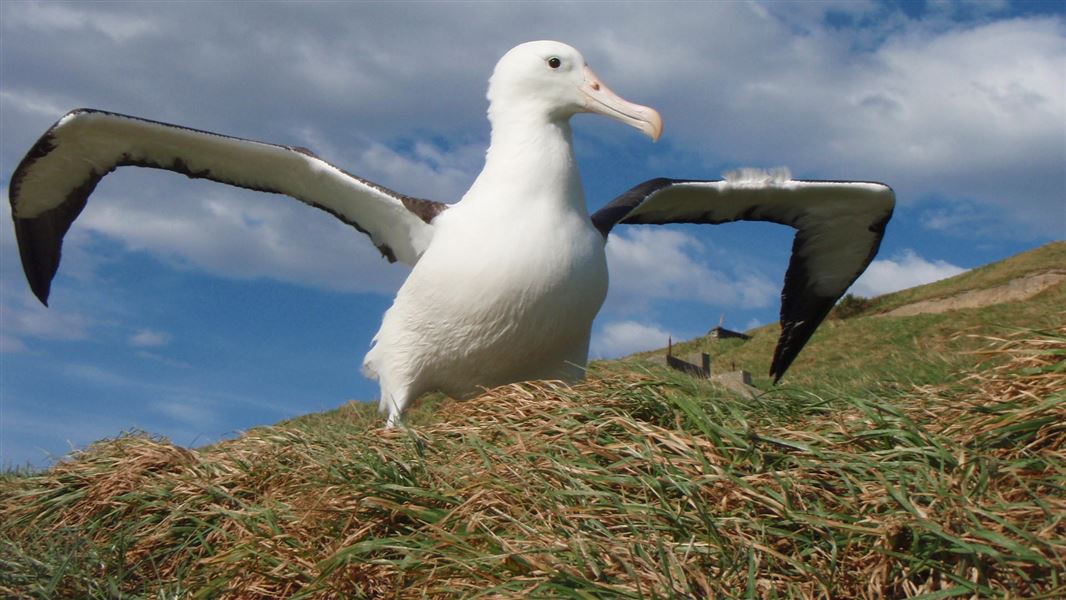New Zealand has significant populations of migratory species, including seabirds, shorebirds, marine mammals, turtles and fish. Many of these species are in decline or listed as threatened species.
While we can set rules to protect migratory species and manage threats within New Zealand, they are at risk from threats once they enter the high seas or other countries’ jurisdictions. Threats include over-fishing, bycatch, intentional capture and harvest of species, climate change, marine debris, oil spills and shoreline habitat loss.
The Convention on the Conservation of Migratory Species of Wild Animals (CMS) covers any wild animal that migrates beyond the jurisdiction of party states. Cooperating with other CMS parties is our most effective means to influence the conservation of our migratory species beyond New Zealand.
New Zealand became a party to CMS in 2000. DOC is New Zealand’s lead agency.
The decision-making body of CMS is the Conference of Parties (COP). COP meets every three years to take decisions on CMS related issues. It agrees to list migratory species on its appendices:
- Appendix I lists migratory species that are threatened with extinction;
- Appendix II lists species that would significantly benefit from co-operation that could be achieved from international agreements.
Parties are required to provide immediate protection for their species included in Appendix I and encouraged to conclude agreements covering the management of species included in Appendix II. COP also agrees on resolutions and guidelines to improve conservation of migratory species and mitigation of threats.
At COP13 in India in 2020, parties agreed to list Antipodean Albatross on Appendix I of CMS, a joint initiative by New Zealand, Australia and Chile.
New Zealand CMS National Report – 2019 (PDF, 578K)
Species specific instruments
Under the CMS framework are a number of subsidiary instruments to conserve specific species or groups of species. Some are legally binding, and others are voluntary. New Zealand is a signatory to:
Agreement on the Conservation of Albatross and Petrels (ACAP)
New Zealand is a global hotspot for breeding seabirds. ACAP seeks to conserve albatrosses, petrels and shearwaters by coordinating international activity to mitigate known threats to their populations. ACAP works closely with organisations that regulate activities that may interact with ACAP species, such as regional fisheries management organisations, and supports them with science-based best-practice advice.
Memorandum of Understanding on the Conservation of Migratory Sharks (MOU-Sharks) (2015)
Sharks face increasing threats globally, including accidental capture in fisheries, targeted capture for their fins, liver oil, cartilage and meat, pollution, habitat damage, alteration or loss from coastal development. DOC works closely with the Ministry of Primary Industries to achieve and maintain the conservation of sharks, both here in New Zealand and throughout the world’s oceans.
Memorandum of Understanding for the Conservation of Cetaceans and their Habitats in the Pacific Islands Region (Pacific Cetaceans MOU) (2007)
Signatories to this MOU agree to work together for the conservation of whales and dolphins in the Pacific Islands and take collaborative action to address threats such as hunting, by-catch in fishing operations, entanglement in marine debris, ship strike, pollution and the impacts of climate change.
East Asian-Australasian Flyway Partnership (EAAFP)
EAAFP is a network of partners within the East Asian-Australasian Flyway and aims to protect migratory waterbirds, their habitat and the livelihoods of people dependent upon them. The Flyway is one of nine major migratory routes recognised globally. This partnership sits outside of the CMS framework.
